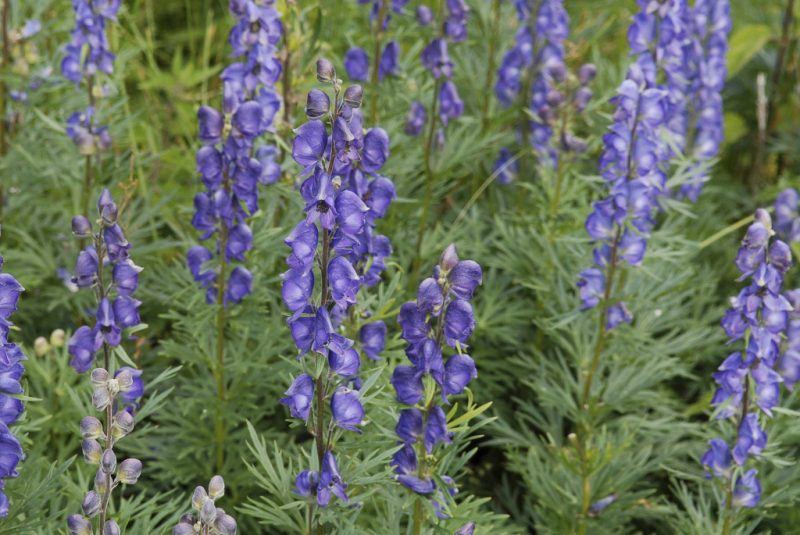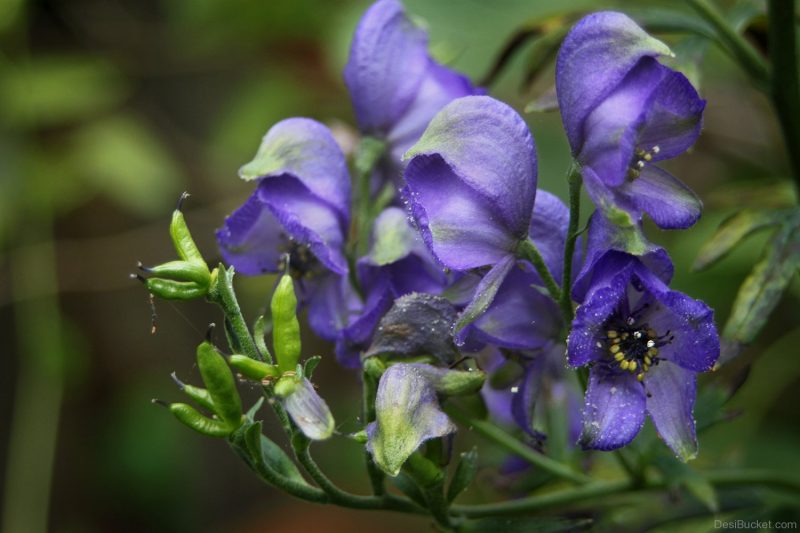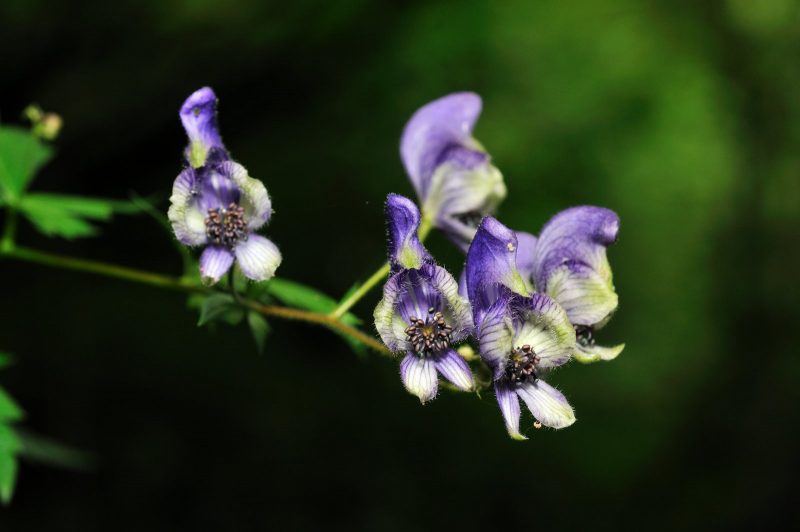In nature, this plant has more than 300 species, and in the culture, wolf aconite began to grow about 200 years ago. Today, breeders have created beautiful decorative varieties of this plant, although earlier the purpose of its cultivation was more practical than decorative - in ancient times they treated many diseases and used them as an antidote.
Material Content:
Description of a poisonous plant
Aconite grows in the forest and in summer cottages. If you look at its colors, they will resemble a cultural delphinium, and these plants are really related.

All parts of aconite are poisonous, especially during flowering. Do not touch the flowers with your hands, try to pick, even their smell can cause a headache.
There is a claim that cultivated varieties contain less toxins, especially if they are repeatedly cultivated in one place. But when transplanting a plant and caring for it, it is advisable to observe safety measures, work with rubber gloves.
- In tubular aconite, a new root, which has the appearance of a tuber, grows annually, and the old one dies.
- There are plant species with a slightly twisted rod root or perennial tubers.
- The leaves are rounded, have the next arrangement, consist of 5 or 7 shares.
- Flowers grow on the top of the stem, which reaches 0.5 - 1.5 m in height.
- The color of the corolla is most often blue, but yellow, blue, purple, and white are also found.
Where does wolf aconite grow in Russia
In the vastness of Russia there are 5 species of aconite, equally poisonous. These plants are quite common and well adapted to cold winters.

- North wrestler.It grows in the forest among shrubs, distributed in the European part of the country. The plant blooms with white or purple flowers, corollas are already longer than those of cultivated varieties.
- Wool resistant. blooms in yellow flowers, is found everywhere in the European part, except the Cis-Urals, in forest glades and in dense thickets.
- Flerov's wrestler. An endangered species that grows only in the Vladimir region. He loves wet floodplain meadows and wetlands, blooms with purple flowers.
- Dubravny. The leaves are pinnately dissected, the flowers are pale yellow, growing only on chernozem soils, in the steppe.
- Aconite napellus. A plant with beautiful, bright blue, blue, white and purple flowers. It can be found in suburban areas as an ornamental plant. Another name for this plant is Scutellaria.
The use of herb wrestler in homeopathy and traditional medicine
This plant in folk medicine is most often used to treat cancer patients. Tincture of aconite is used in severe, 4 stages of the disease, when radiation therapy and chemotherapy are powerless to destroy tumors. Aconite also does not destroy them, but eases the patient’s condition, his tincture is used during pain attacks. Dr. Aliferov, who has devoted much attention to herbal cancer treatment, pays a lot of attention to aconite.
People's advice: use in folk medicine celandine

Externally, tincture of aconite is used for radiculitis to relieve pain. Of great importance in Slavic folk medicine, the plant did not have, in view of its special toxicity. There are cases when aconite leaves, accidentally falling into a salad, led to poisoning with a fatal outcome.
In official medicine, a pale-wrestler is used. It is part of the Allapinin preparation, which has an antiarrhythmic effect on the heart.
- In homeopathy, the wrestler is used for various neuralgia, fear, anger.
- Interestingly, Mongolian folk medicine considers the root of wolf aconite (northern wrestler) a cure for all diseases. It is harvested in early spring or late autumn. In October, ripened seeds of the plant are collected, tinctures are prepared from them for the treatment of syphilis and other purulent infections.
- The wolf aconite flower is widely used in Tibetan medicine. They are treated for parasitic skin diseases, toothache, intestinal and renal colic, epilepsy.
- In Altai, dry root is chewed with stomach pains or alcohol tinctures are prepared. Lotions are made externally to treat breast cancer, and also used as an anesthetic for dropsy.
Garden cultivation, precautions
Now on sale there are beautiful cultivars of aconite. They are distinguished by the height of the stem and the diverse color of the floral corolla.

Popular varieties:
- "Bicolor." White flowers are tucked around the edge in pale purple or pale blue.
- “Ivorin. An early flowering variety with compact cream inflorescences and shoots up to 60 cm in height.
- Good varieties of aconite Monarum, especially the white, large-flowered Grandiflorum Alba. Pinksination variety has pink flowers, not very frost-resistant.
The agricultural technology of this plant is very simple. On hot days, the plant needs watering, not frequent, but plentiful. This is a very unpretentious plant, with its cultivation there are no problems. It grows well in sunny and shaded flower beds, undemanding to watering. For beautiful flowering, he needs an abundance of light.
Of the pests on aconite, aphids can be seen. They fight it with a store insecticide or a solution of soap with tobacco.
Read also:Schisandra chinensis: medicinal properties and contraindications
The plant is winter-hardy, reliable, grows well. You can share it early in the spring or late in the fall.
In a temperate climate, this flower reveals all its beauty, even with minimal care.
Aconite grows in a tall bush on black soil, blooms for a long time and is very beautiful. It is convenient to use for decorating unsightly walls and fences.
Legends and myths associated with wolf aconite
For the first time this poisonous plant is found in the description by the Greek physician Theophrastus. Greek mythology pays much attention to the flower. According to legend, it came from the saliva of the wild dog Cerberus, who guarded the entrance to the kingdom of the dead.

The patron saint of aconite is the planet Saturn. The meaning of the flower is emotional coldness, slander. In ancient times, this plant was called "witch flower", "wolf root". They hunted wild predators.
The attitude to aconite has changed to a more positive one these days, but care must be taken when caring for the plant. It is better not to grow it on a site where young children will have access to it.












